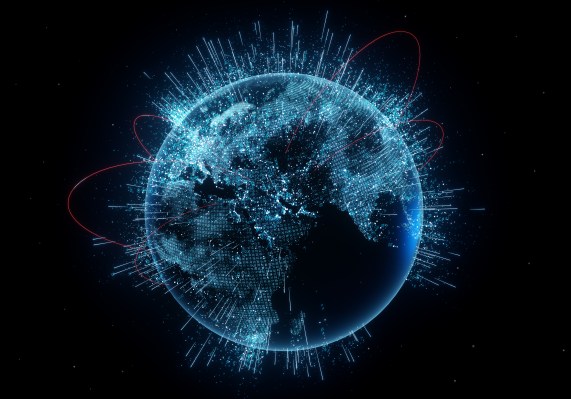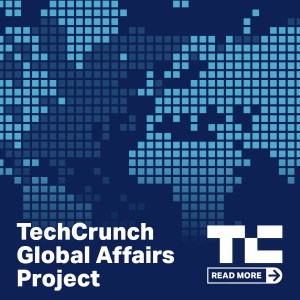The TechCrunch Global Affairs Project examines the increasingly intertwined relationship between the tech sector and global politics.
The word “treaties” doesn’t exactly conjure images of modernity so much as a dusty history book. But as with other aspects of business and society, technology is rapidly changing how treaties are monitored and enforced — with profound implications for global governance and international law.
Treaties are legally binding international agreements between countries. Pick any major issue affecting the planet or people and there is probably a treaty regulating the matter. Climate change, biodiversity, human rights, refugees, labor, shipping, transnational crime and fisheries are among the fields governed by global treaties, which count most countries — the U.S.-included — among their members. Treaties are central to global governance, underpinning most U.N. Sustainable Development Goals, for instance.
But for treaties to work — we need to be able to quickly and accurately discern compliance and results. This has been historically challenging — violators by nature are inclined to subterfuge. And even in areas of cooperation, like scientific measurement and assessments, imprecise, infrequent and inaccurate data can prevent signatories from understanding how a problem is evolving or if their solutions are helping.
The era of big data
To meet this challenge, across dozens of treaties, research communities are marshalling new technologies to produce fertile ecosystems delivering untold levels of data and knowledge on underlying conditions and results measurement.
Technology is generating orders of magnitude increases in data quantities. Vast ecosystems of instrumentation and computing hardware are being deployed. Increasingly today scientific communities and governments combine remote sensing and Earth observation (EO) satellites, cloud computing, artificial intelligence (AI), machine learning (ML), and modeling and visualization tools. As we get better at processing and analyzing these data, we are getting closer to delivering near real-time, global and more precise knowledge than ever before.
While individual technologies have made important contributions, the real power behind these developments is their use in combination. Together these technologies enable what I call “intelligent treaty systems.”
Anti-fishing technology
Consider the Convention on Biological Diversity (CBD), which protects biodiversity of flora and fauna, promotes its sustainable use, and ensures fair and equitable access to benefits from its use. To determine species’ ranges and populations, biodiversity researchers deploy camera traps and microphones in remote locations that transmit data on animal movements via cellular connections to the cloud. With a single camera generating up to 50 TB of data per year, deep learning techniques are used to analyze the massive data and create maps of species’ habitats and numbers. Similarly, drones with video cameras survey sea turtle migration lanes in Costa Rica, with footage analyzed through deep learning algorithms trained to identify individual turtles. Meanwhile thousands of smartphone-wielding citizen scientists record and upload animal sightings to mobile web platforms such as Merlin.
Data from all of these sources are shared with the Global Biodiversity Informatics Facility in Copenhagen, an intergovernmental global biodiversity data repository. Its records have increased tenfold since 2007, now exceeding two billion records. Together this data and research informs the work of the International Panel on Biodiversity and Ecosystem Services, the dedicated scientific platform for the CBD.
Meanwhile conservationists have harnessed Automatic Identification System (AIS) transponders used for ship safety to combat illegal fishing AIS signals to provide comprehensive global data on vessel activity. Groups such as Global Fishing Watch analyze AIS satellite data captured by private firms like ORBCOMM with deep learning to pinpoint and map illegal fishing worldwide. Researchers even use AI and ML to identify vessels that illegally turn off their AIS systems to evade detection.
It’s not just the environment. Satellites are helping fulfill the promise of the Anti-Personnel Landmine Ban Convention. At the outset of the process, Earth observation data are fed into a dedicated geospatial database and mapping platform operated by ESRI, the Information Management System for Mine Action to create maps of mine-contaminated lands. Web platforms also enable individuals to upload information on mine-affected areas. Mine remediation experts on the ground upload more detailed data obtained through diverse sources including drones equipped with ground penetrating radar (GPR) and even trained rats with RFID collars to build precise maps of landmine-contaminated areas. Technicians then use machinery combining GPR and robotics to identify (often using AI and ML) and destroy individual mines.
Recent government attacks on vulnerable Rohingya communities in Myanmar show how technology is also increasingly exposing and documenting otherwise hidden violations of human rights and refugee treaties. Human rights researchers have used Earth observation data to track troop movements, evidence of expulsions, razing of villages and mass killings. Meanwhile photos and video that individuals supplied through mobile phones were channeled through secure cloud platforms such as the Eyewitness to Atrocities portal. ML and AI were used to automate EO data and video imagery analysis. Groups like Amnesty International and SITU Research aggregated the data to generate virtual reality visualizations of settings where violations occurred. EO data was cited in the Gambia v. Myanmar case before the International Court of Justice. Voluminous records of hate speech on Facebook that fueled attacks on Rohingya are being collected and analyzed using ML for the case as well.
Risks and rewards
Despite evident progress, intelligent treaty systems are still emerging and experimental. Yet indications are that the value of technology is gaining recognition and will prove transformative. Certainly, numerous challenges must be overcome to realize technology’s full potential. At a basic level, all the scientific knowledge in the world won’t matter if governments don’t act on it and live up to their treaty obligations.
One drawback is the regulatory risk around data protection and privacy, especially when it concerns human rights and already vulnerable populations. Protections must be implemented to ensure data are used discreetly and anonymously where possible. AI is a further concern. The EU draft regulation on AI seeks to outlaw the use of certain technologies such as biometric identification systems in public settings, and similar to its General Data Protection Regulation would affect activities outside of Europe. Likewise, although the public sector geospatial community has made open data a global norm, efforts must be made to integrate the expansion of private sector geospatial data into global governance efforts.
Although treaties are creatures of diplomacy and typically considered rigid in nature, the story of technology’s application shows a dynamic process of bottom-up self-organization by diverse communities across public, private, nonprofit and academic sectors. These activities are likely to make major contributions that offer hope for our ability to overcome many significant planetary challenges.


